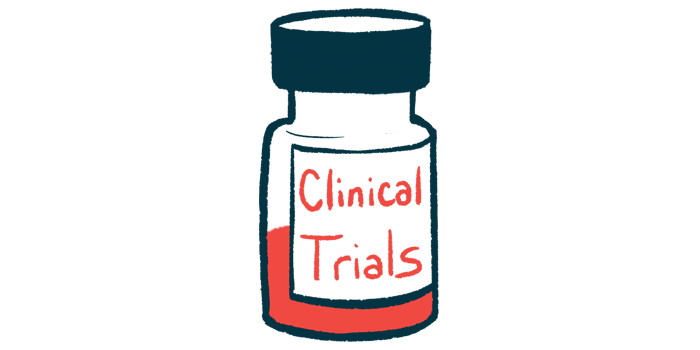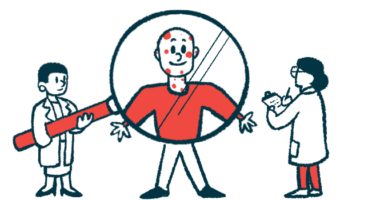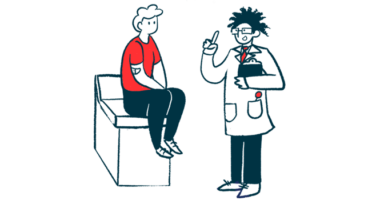Long-term Vyjuvek safe, effective in dystrophic epidermolysis bullosa
OLE study enrolled 47 participants, including 24 from GEM-3 trial

Long-term treatment with the topical gene therapy Vyjuvek (beremagene geperpavec) was associated with continued wound closure and high patient satisfaction among people with dystrophic epidermolysis bullosa (DEB) who took part in an open-label extension (OLE) study.
The therapy was also well tolerated over up to more than two years of treatment.
“Overall, the benefit-risk profile of [Vyjuvek] supports the continued long-term treatment of children and adults with DEB,” the researchers wrote. The study, “Long-Term Safety and Tolerability of Beremagene Geperpavec-svdt (B-VEC) in an Open-Label Extension Study of Patients with Dystrophic Epidermolysis Bullosa,” was published in the American Journal of Clinical Dermatology. It was funded by Vyjuvek’s developer, Krystal Biotech.
DEB is caused by mutations in the COL7A1 gene that result in a lack of collagen 7 (COL7), a structural protein that helps hold skin layers together. As with other forms of epidermolysis bullosa, people with DEB have fragile skin that easily blisters and tears, leading to open wounds that heal slowly and are prone to infection.
Applied as a gel directly onto open DEB wounds once a week, Vyjuvek is designed to deliver healthy copies of COL7A1 to skin cells, providing them the blueprint to make their own COL7, which should help reduce blistering and resolve wounds. The gene therapy, formerly called B-VEC, is approved in the U.S. for DEB patients, ages 6 months and older, and in the European Union starting at birth.
The approvals were supported in part by data from the Phase 3 GEM-3 trial (NCT04491604), which enrolled 31 people with DEB, ages 1-44. During the six-month study, each participant had one wound treated with weekly Vyjuvek and another treated with a placebo.
Significantly more wounds treated with Vyjuvek had completely healed after three and six months over those given the placebo.
Results of open-label extension study
In the subsequent OLE study (NCT04917874), all the participants received weekly Vyjuvek for about another two years. The study enrolled 47 participants, 24 who rolled over from GEM-3 and 23 new participants who met the enrollment criteria for GEM-3, but hadn’t been able to participate in it.
The participants ranged in age from 6 months to 46 years. All but two had recessive DEB (RDEB), a more severe subtype of the disease. More than half had over a year of Vyjuvek treatment, with the median being 565 days and the longest being a little over two years.
The gene therapy was well tolerated, with no serious or severe events considered related to it. The most common side effects — COVID-19, cough, fever, skin infection, and vomiting — weren’t considered related to Vyjuvek.
For the rollover participants, the wounds that had been treated with Vyjuvek in GEM-3 were monitored through the OLE, with the results showing that complete wound closure rates ranged from 61.1% to 89.5%, similar to the initial study.
A little more than a third of the wounds that had closed during GEM-3 remained closed throughout the OLE, and those that reopened responded again to treatment, according to the researchers, who noted that DEB wounds reopen easily, so “the ability of wounds to demonstrate closure again is highly relevant when considering the use of [Vyjuvek] long term.”
Some wounds that didn’t completely close also showed significant long-term improvements.
For the rollover participants, treatment satisfaction scores were generally high at the end of GEM-3 and were sustained throughout the OLE. The new participants had similar scores as those in the rollover group at the OLE’s end.
Results from Skindex-29, and EuroQol 5-Dimension, patient-reported measures of life quality and general health, showed tendencies toward improvement over time, but they weren’t significant. Other symptoms, like pain and itch, can persist even when wounds close, impacting life quality, said the researchers, who also found the findings difficult to interpret because of Vyjuvek’s approval in the U.S. during the study, which caused many participants to drop out before they completed later assessments.
“Collectively, the clinical response to [Vyjuvek] demonstrated in the OLE was consistent with the phase [3] trial,” the researchers wrote. “The continued safety and improvement in wound closure … upon long-term [Vyjuvek] administration highlight its unique properties compared to other therapies, for which severe immune reaction potentials often limit therapeutic attempts to single applications.”







